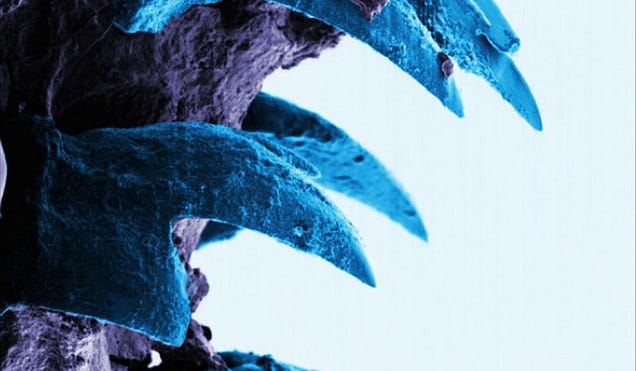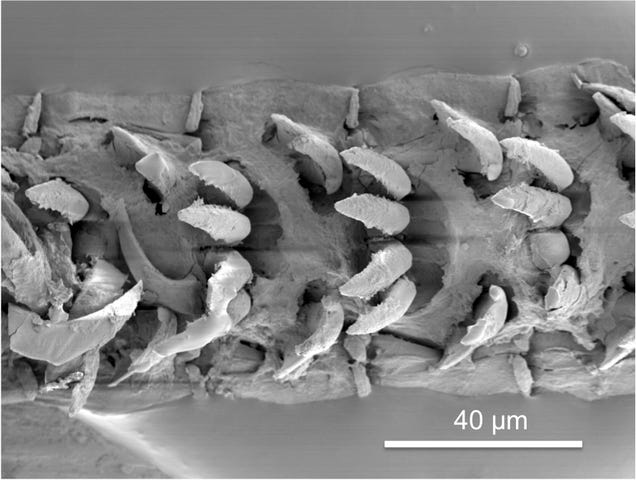Step aside, spider silk you've just been replaced by the limpet as the creature with the strongest biological material known to science. It's a discovery that could result in high-tech materials even tougher than Kevlar.
The new research shows that the teeth of limpets conical shaped sea snails (Patella vulgata) that scour rocks in shallow waters feature a tensile strength of between 3 and 6.5 gigapascals (GPa). Compare that to the previous record holder, spider silk, which has a tensile strength around 1.3 GPa.
Limpets have evolved these incredibly durable teeth to help it rasp over rock surfaces when feeding on algae. Otherwise, its teeth would just whittle away to nothing.
The toughness lies in its ability to pack thin material fibers into a small space, which produces high volume segments of reinforcing nanofibres. Remarkably, it's a "natural design" that's optimized towards theoretical strength limits. These teeth are approaching, or have already approached, a kind of fitness peak for bio-material strength.
"[Our] observations highlight an absolute material tensile strength that is the highest recorded for a biological material, outperforming the high strength of spider silk currently considered to be the strongest natural material, and approaching values comparable to those of the strongest man-made fibres," note the authors in their study, which now appears at the Journal of the Royal Society Interface.
The discovery could help improve synthetic composites used to build cars, aircraft, boats, and you guessed it dental fillings.





